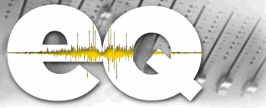Bridging the Gap Between Analog and Digital Recording
by Grace Larkin
On Tuesday, July 6th, San Francisco’s Studio Trilogy
held a two-hour demonstration of the newly released Closed Loop Analog
Signal Processor, also known as CLASP. Five years in the making, CLASP
is a breakthrough way to incorporate analog tape into digital
production through turning any tape machine into a DAW plug-in
processor. In other words, this product reduces rewind time as well as
tape cost, allowing for the same reel to be used for an entire
recording, running the reel front to back before rewinding. The release
of this form of hybrid analog/digital technology is overwhelmingly
exciting in the production world, and I was lucky enough to experience
the processor in action.
Inside the studio, CLASP inventor,
Chris Estes ran the show, explaining to various recording engineers,
journalists, and curious faces like myself how the thing really works.
Estes sat behind the control panel, with all of us over his shoulder,
and effortlessly executed a live session with Bay Area band The Trophy Fire,
a three-piece group willing to lay down a track with Estes while he
simultaneously explained the process as they went. The band (guitar,
bass, and drums) played through the song one time instrumentally, felt
they had the cut they wanted other than a 5-second guitar punch-in fix,
and were on to the vocals.
Because the major part of the
recording went by so smoothly, and because the equipment was equally
flawless, Estes was able to show us some of CLASP’s cool secrets. One
feat was CLASP’s ability to jump between tape speeds on the fly to
audition and then print, even mixing speeds in the same project –
something that’s impossible in a production recorded exclusively on analog tape. Why is this important? Gino Robair, former editor of Electronic Musician and now contributor to Keyboard magazine, says, “In general, the faster the tape speed, the
higher the fidelity. On the other hand, the slower the tape speed, the
more old-school the sound becomes—rounded transients, beefier bass
frequencies, and a bit more oomph. Because everything is, ultimately,
sent to disk when using CLASP, you can do a recording pass of the
vocals at, say, 30 ips (inches per second), and then do the lead guitar
at 15 ips to fatten the tone. During the session at Studio Trilogy,
Estes demonstrated the sonic differences that changes in tape speed
make and the results were remarkable. It’s the kind of sound we all
want from plug-ins, but never seem to get.”
The tape machine
ran throughout the session, and it was hard to believe the digital side
of things was really going to be fluidly integrated with this large
piece of analog equipment. Beyond our expectations, though, Estes lay
on the last vocal cut, mixing the final product with a sound so
pristine it had us all drooling for our own Endless Analog/CLASP.
Quick, easy, and professional beyond all expectations, the CLASP setup
proves to be the biggest breakthrough in recording technology we’ve
seen in years. Learn more about the equipment and how it could work for
you at www.endlessanalog.com.
Me with CLASP inventor Chris Estes and the CLASP.
CLASP inventor Chris Estes and Vice President Amy Becker showcasing their new CLASP product.





